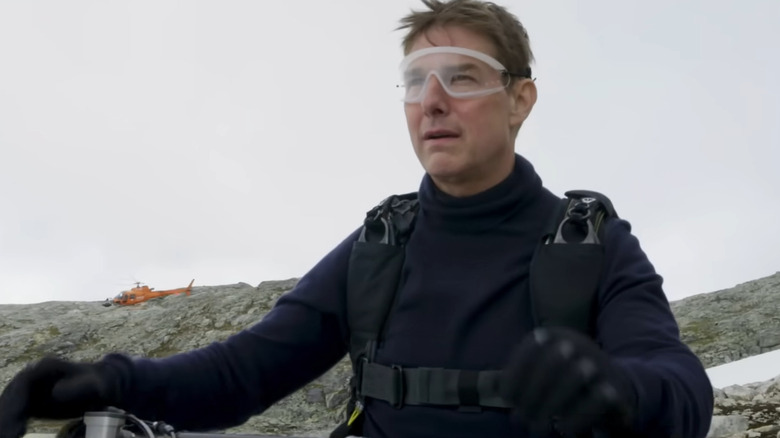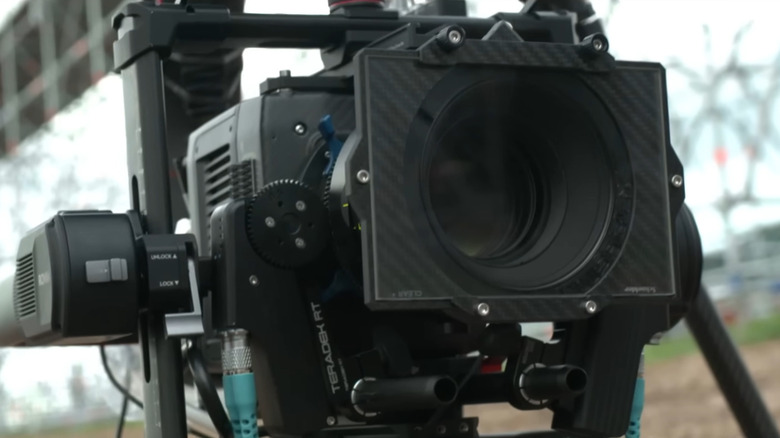The Cameras Used For Mission Impossible 7's Motorcycle Stunt Didn't Exist Just Two Years Ago
Whenever it seems like movie theaters are in peril, somewhere in the world is Tom Cruise leaping out of bed, ringing up Christopher McQuarrie, and saying "let's go." In an era where the idea of the bonafide movie star has dwindled significantly, the action megastar face of "Edge of Tomorrow" and "Top Gun: Maverick" has proved to be the exception to the rule. Cruise understands the appeal of the theatrical experience more than most folks in Hollywood, which is why he constantly goes out of his way to prove it through a series of jaw-dropping practical stunts.
When it comes to marketing a "Mission: Impossible" movie, the trailer is often a promotional tool for the behind-the-scenes featurette, where Cruise gets to show off what insane feat he's about to put himself through for our viewing pleasure. Of course, it was around the Burj Khalifa climb from "Ghost Protocol" when the stunts almost overshadowed the films themselves. They were all anyone could talk about, and rightfully so. From there, Cruise strapped himself to the side of a cargo plane ("Rogue Nation") in addition to performing a HALO jump within a precise window of time ("Fallout").
Next summer's "Dead Reckoning – Part 1" has had Cruise going overboard with behind-the-scenes goodies, whether it be standing on top of a plane or jumping out of one. But the real kicker has been released in the form of a 9-minute IMAX featurette detailing what the crew deems as "the biggest stunt in cinema history." Not only is the cliff jump itself a huge accomplishment, but so is the technology used to capture it.
Cruise's stunts breeds innovation
In the featurette, McQuarrie talks about how, while it's important for the stunts themselves to go according to plan, one of the larger tasks at hand is making sure their equipment is even able to bring it to the screen:
"Coming up with the stunt is only one of the technical challenges, the other is putting a camera in a place that you can see where Tom is doing it. Finding the right lens, the right platform, the right medium, even two years ago the cameras didn't exist that would allow us to do what we're trying to do today."
Cruise's HALO jump from "Fallout" required exact precision, as he had to be within 3 feet of the camera operator when he jumped. The "Dead Reckoning" stunt is much different, as Cruise needs all of the space he could get for the motocross bike jump. It looks like they've made a rigging system on the drone that's been able to get the money shot from a number of angles that weren't possible before. "That means that the camera has to be in front of Tom and as close to him as possible," says McQuarrie.
It's really heartening that the "Mission: Impossible" stunts not only result in a heart-racing spectacle but innovation in the means to capture it.
"Mission: Impossible – Dead Reckoning Part 1 is set to hit theaters on July 14, 2023.

